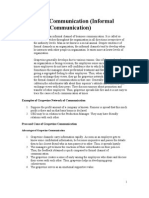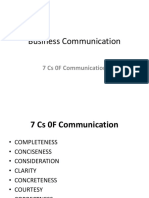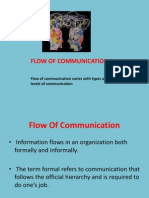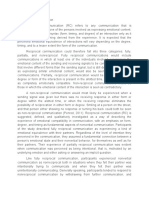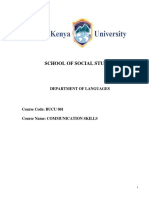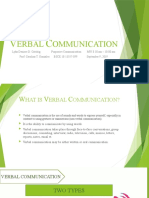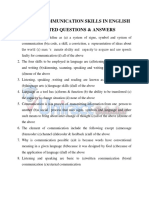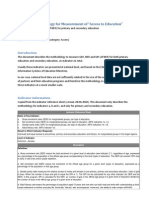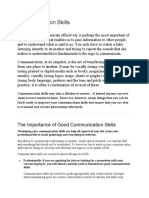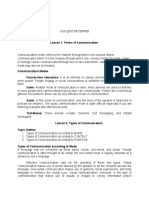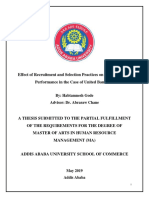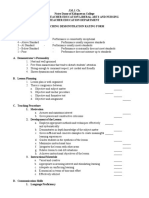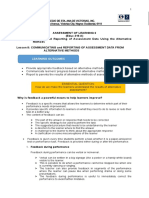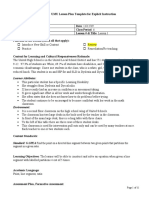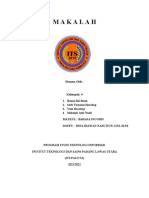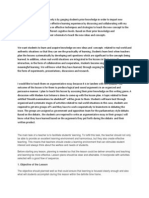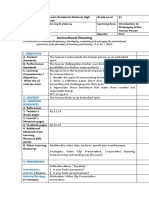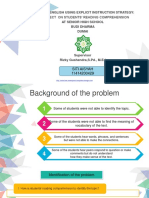0% found this document useful (0 votes)
2K views4 pagesInformal Communication Insights
Informal communication has advantages like being more direct, spontaneous and flexible, allowing better expression of grievances. However, it lacks authority lines and can include foul language.
Communication barriers include using jargon, emotional barriers, distractions, differences in perception, physical disabilities, language differences, expectations and cultural differences.
Communication models represent the communication process systematically. Linear models show one-way communication while transactional models include two-way feedback. Interactive models are used for new media like the internet where people can respond.
Uploaded by
misael gizacheCopyright
© © All Rights Reserved
We take content rights seriously. If you suspect this is your content, claim it here.
Available Formats
Download as DOCX, PDF, TXT or read online on Scribd
0% found this document useful (0 votes)
2K views4 pagesInformal Communication Insights
Informal communication has advantages like being more direct, spontaneous and flexible, allowing better expression of grievances. However, it lacks authority lines and can include foul language.
Communication barriers include using jargon, emotional barriers, distractions, differences in perception, physical disabilities, language differences, expectations and cultural differences.
Communication models represent the communication process systematically. Linear models show one-way communication while transactional models include two-way feedback. Interactive models are used for new media like the internet where people can respond.
Uploaded by
misael gizacheCopyright
© © All Rights Reserved
We take content rights seriously. If you suspect this is your content, claim it here.
Available Formats
Download as DOCX, PDF, TXT or read online on Scribd
/ 4


